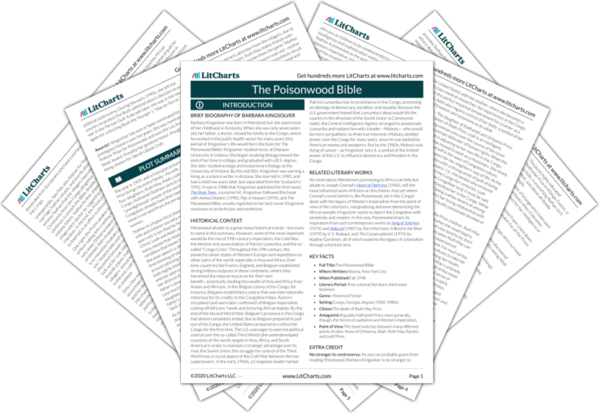The Hills of Soil
There’s no better symbol for the fallacies of imperialism than the hills of soil that Mama Tataba builds for the Prices’ garden in Kilanga. Mama Tataba knows from personal experience that the best way to…
read analysis of The Hills of SoilMethuselah
Methuselah, the parrot who Brother Fowles kept during his time in Kilanga (and who later becomes a pet for the Price family), is a complicated symbol. At times, he symbolizes the captivity in which the…
read analysis of Methuselah“Bangala”
The English-speaking characters in Poisonwood learn a number of Congolese words, such as “bangala.” But “bangala” can mean two different, even opposite things: pronounced one way, it means “good,” but pronounced slightly differently, it means…
read analysis of “Bangala”The Bow and Arrow
The bow and arrow are a traditional symbol of female empowerment (dating all the way back to the ancient Greeks, who worshipped Artemis, the bow and arrow-toting goddess of the hunt). Thus, it’s appropriate that…
read analysis of The Bow and ArrowThe Okapi
The first—and last—important symbol in the novel is the okapi; the strange animal that Orleanna witnesses during her walk through the jungles of the Congo. As befits such an important symbol, it resists easy interpretation…
read analysis of The Okapi












